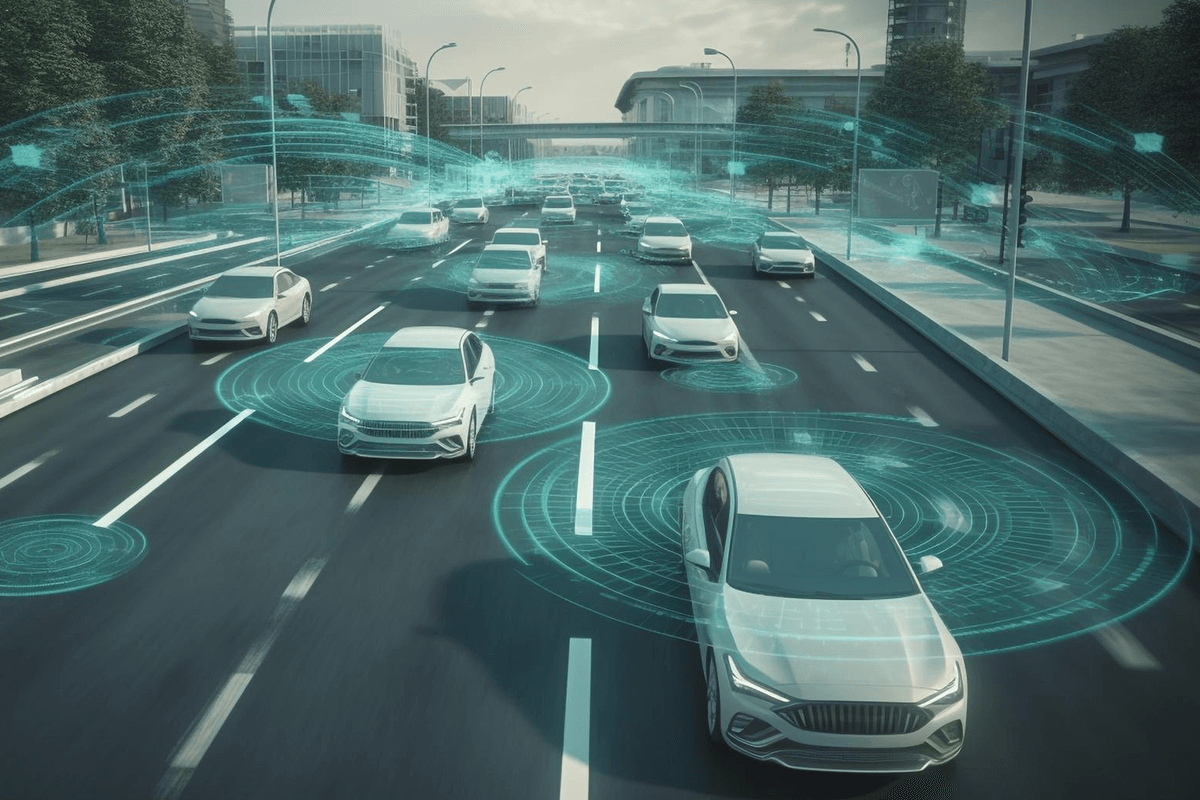The automotive industry is changing with advanced in-vehicle technologies, and as a result, the concept of vehicle networking has emerged. It can help minimize costs and enhance fuel utilization efficiency, safety, and traffic management. Tessolve introduces Tera, a compact, high-performance application gateway based on S32G274A SMARC SoM targeted for vehicle networking and industrial applications. In this blog, we will decode the features of Tera and its associated benefits and applications.
Overview of Tera
Tera is an application gateway with multiple network interfaces used for real-time predictions at scale. It is a compact, high-performance application gateway based on S32G274A SMARC SoM targeted for vehicle networking and industrial applications. It is a box connecting sensor data over a can and transferring it to the cloud through a wireless interface, facilitating rich I/O interfaces and computing capabilities.
Features of Tera
Multiple Network Interfaces
Multiple network interfaces on a device or system offer several benefits, such as redundancy, load balancing, etc. Multiple network interfaces can isolate different types of traffic or create separate network segments. This enhances security by preventing unauthorized access between segments or limiting the impact of security breaches. Moreover, the Tera possesses multiple network interfaces featuring 6x CAN/CAN FD, 2x FlexCAN, and 2x GbE Ports. If put simply, a device having “2x FlexCAN” means that the device features two separate FlexCAN communication interfaces, each of which can be configured and used to communicate with other devices using the CAN protocol. On the other hand, Having “2x GbE Ports” means that the device or system is equipped with two separate Gigabit Ethernet ports, each of which can be used to establish a network connection.
Supports Operating System: Linux OS on A53 & RTOS on M7
Combining a Linux operating system (OS) on ARM Cortex-A53 cores and a real-time operating system (RTOS) on ARM Cortex-M7 cores in a multi-core system offers several benefits, especially in embedded and heterogeneous computing environments. The ARM Cortex-A53 cores running Linux provide a full-fledged operating system environment with multitasking capabilities, supporting applications that require significant processing power. The ARM Cortex-M7 cores running an RTOS offer deterministic and low-latency response times, making them well-suited for real-time tasks such as control and sensor data processing.
Wireless Connectivity: Wi-Fi 6, 5G/LTE
Wi-Fi 6 offers significantly higher data rates than its predecessors, making it ideal for high data transfer requirements like streaming high-definition video or large file downloads. Wi-Fi 6 reduces latency with technologies like Basic Service Set (BSS) Coloring and OFDMA, making it suitable for real-time applications like online gaming and video conferencing. 5G and LTE networks offer low latency, making them suitable for applications requiring quick responses, such as remote surgery, industrial automation, and autonomous vehicles. It also provides extremely high data transfer speeds, enabling real-time streaming of 4K and 8K video, virtual reality experiences, and other data-intensive applications. Moreover, 5G enables edge computing, allowing data processing closer to the source, reducing latency, and enhancing real-time analytics.
GPS + GLONASS Module
A GPS + GLONASS module is a device that combines the Global Positioning System (GPS) and the Global Navigation Satellite System (GLONASS) to provide accurate positioning and navigation capabilities. By combining signals from both GPS and GLONASS satellites, a GPS + GLONASS module can offer improved positioning accuracy, especially in challenging environments like urban canyons, dense forests, or areas with tall buildings that might obstruct signals from one system.
IMU 6-Axis Sensor
An Inertial Measurement Unit (IMU) 6-axis sensor is a device that combines multiple sensors to provide information about orientation, acceleration, and sometimes other motion-related parameters. A 6-axis IMU typically includes two sensors: a 3-axis accelerometer and a 3-axis gyroscope. An accelerometer measures linear acceleration along three perpendicular axes (usually X, Y, and Z), whereas A gyroscope measures angular velocity or rotational rate around each of the three axes. Combining these two sensor types allows the IMU to provide valuable information about the object’s position, orientation, and movement in three-dimensional space. This data is crucial in various applications, including robotics, VR & AR, Drones, UAVs, etc.
Avail the Benefits of Tera in Vehicle Networking
Real-Time Data and Signal Sharing
Tera uses the NXP S32G2 Processor, which facilitates the supercomputing capability. Moreover, as it comprises features like GPS + GLONASS Module, it provides accurate positioning and navigation capabilities in real-time.
High-Speed In-Vehicle Networking
Tera utilizes the IMU 6-Axis Sensor typically includes two types of sensors: a 3-axis accelerometer and a 3-axis gyroscope. These sensors capture data about objects’ movement and orientation in three-dimensional space. Hence provides high-speed in-vehicle networking. Moreover, Tera is powered by Amazon Web Services (AWS) IoT Greengrass and supports AWS IoT FleetWise. It is a managed service that can be used to collect, transform, and transfer vehicle data. Vehicles that use different protocols and data formats can collect and organize data through AWS IoT FleetWise.
Predictive and Prescriptive Vehicle Health
“Predictive” and “prescriptive” are terms often used in the context of vehicle health monitoring and maintenance. Tera connects to sensor data over a can and transfers to the cloud over a wireless interface offering rich I/O interfaces and computing capabilities. Hence, providing an optimal scope of data analytics and predictive modeling techniques.
Read More: Top PCB Industry Trends
Applications of Tera
Prescriptive Maintenance
Tera helps integrate data from various sources to understand the vehicle’s conditions comprehensively. Hence offering actionable recommendations for maintenance, repairs, and component replacements.
Enhanced Safety
Tera is based on S32G274A SMARC targeted for vehicle networking and industrial applications and, due to its predictive maintenance-based data analytics, provides enhanced data safety.
Collision Avoidance
Tera features the GPS + GLONASS Module, and the combination of this offer improved positioning accuracy. IMU 6-axis combines multiple sensors to provide information about orientation, acceleration, and sometimes other motion-related parameters. Hence, it provides better instances and helps avoid a collision.
Experience the Impact of Tera With Tessolve
Customers can benefit from the massive data available for vehicles using the Tera box. Tera is the exclusive product of Tessolve, through which robust predictive and prescriptive maintenance can be underlined. This exclusive application gateway bridges the connection between vehicle data and the cloud, thus helping customers get meaningful insights about vehicle analytics. The mission of Tessolve is to present on all vehicles connecting sensor data to the cloud with minimal cost



